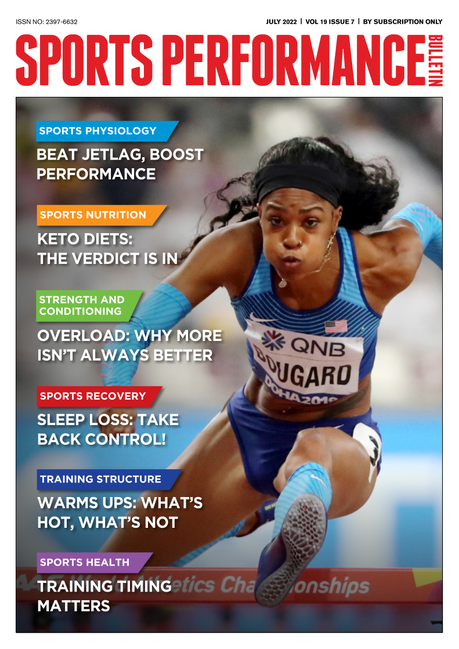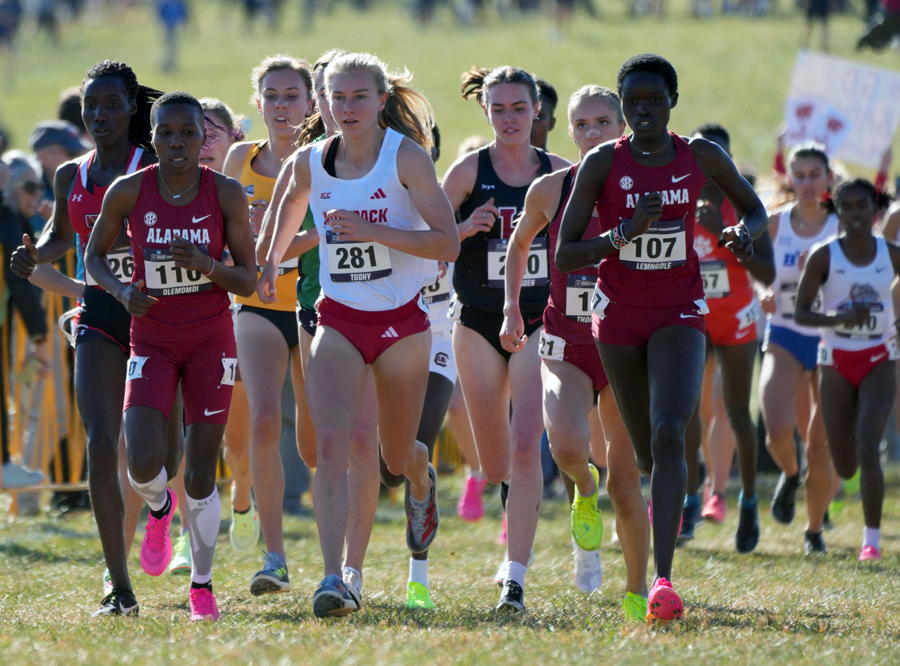You are viewing 1 of your 1 free articles. For unlimited access take a risk-free trial
Athlete health: does training frequency matter?
According to health experts, exercise should be undertaken on all or most days of the week for maximum health benefits. But is this actually true? SPB looks at some new research
There are many reasons why people become involved in sport. For some, it’s simply a continuation of sporting activity they once enjoyed at school, college or university. For many others, especially those who take up endurance sports such as running, cycling or triathlon later in life, maintaining or improving health is an important motivator. This motivation could be anything from wanting to shed a few excess pounds to needing to build up cardiovascular fitness following a health scare. Over time of course, many athletes get hooked and participate in sport just because they love it! However, the continuing health benefits of training remain a powerful background motivator, especially for athletes of more advanced years.
Exercise frequency and health
According to many health experts, exercising regularly on most days of the week is recommended to get the maximum health benefits. Indeed, the official guidelines on exercise and health issued by the American College of Sports Medicine and CDC state that: ‘All healthy adults aged 18–65 years should participate in moderate intensity aerobic physical activity for a minimum of 30 minutes on five days per week, or vigorous intensity aerobic activity for a minimum of 20 minutes on three days per week’(1).
The reasoning for these recommendations comes from epidemiological studies on exercise habits and cardiovascular health. For example, a large 2020 study in the European Heart Journal looked at the relationship between the frequency of moderate to vigorous physical activity with cardiovascular disease, especially in older adults(2). It found that compared to those who were continuously physically inactive, those who increased their frequency of exercise from physically inactive to 1-2 times per week experienced a drop of 0.7 adverse cardiovascular events per 1000 ‘person-years’. However, increasing the exercise frequency to 3-4 times per week resulted in a drop of 1.5 cardiovascular events per 1000 person-years – ie a halving of the risk compared to training 1-2 times per week.
What about weekend warriors?
The recommendations on exercise frequency are widely accepted, but there are many athletes who, for various reasons, are unable to train regularly through the week and instead have to ‘concentrate’ their training into one or two days – for example, over the weekend. This is often the case for those who are travelling in the week, or have onerous work or family commitments for much of the week. Or it may even be simply that the working day plus commute is long, and in the winter months, it’s just too dark or icy to venture out before or after work, and there’s no easily accessible gym facility nearby. In these circumstances, many athletes take advantage of their free time during the precious days off and cram in a large volume of exercise into just one or two days. But what are the implications for health for these ‘weekend warriors’? Can the relatively large volume of exercise performed in just one or two days help offset the lack of frequency, or are these athletes missing out on health benefits?
New research
Much of the previous research on exercise and health has investigated exercise frequency or total exercise time accumulated per week. But what has not been done is to look at exercise distribution – ie compared the health benefits of shorter, frequent bouts of exercise distributed evenly through the week, with a similar volume of exercise performed in one or maybe two chunks at the weekend – the so-called weekend warrior scenario. However, a new study on this topic by a team of US scientists based at Massachusetts General Hospital has just been published in the journal ‘Circulation’(3).
In this study, the scientists examined data from 89,573 British citizens to explore the relationship between their physical activity patterns between June 2013 and December 2015, and the subsequent incidence of 16 different types of diseases, including cardiovascular, mental health, digestive and neurological diseases. Importantly, these activity patterns were not solely self-reported (and thus prone to error) but were derived from actigraph devices (devices worn on the wrist to monitor physical activity) that the study subjects had worn for at least a week during the study period.
The data was gleaned from older subjects (average age 62) as the relationship between physical activity patterns and health becomes easier to detect in later years, while the study sample was fairly evenly split between men and women. When looking for relationships, the scientists were careful to adjust the data for multiple clinical factors, which basically means comparing like with like - ie comparing subjects who were very alike in terms of their individual health, ethnic, dietary etc characteristics, but only differed in their physical activity distributions.
To enable a comparison of ‘regular’ vs. ‘weekend warrior’ exercise patterns, the researchers compared the exercise distribution patterns of those participants who were exercising 150 minutes per week or more and who either performed that exercise across four or more sessions per week or exercised only at the weekend, crammed into one or two sessions. They also compared these participants with inactive participants. The team then looked for associations between these physical activity patterns and the incidence of different diseases to see if a more regular distribution provided superior health benefits.
What they found
The key finding was that when the exercise volume totalled 150 minutes per week or more, both the weekend warriors and those with regular exercise patterns distributed more evenly across the week experienced significant health benefits compared to those who were inactive. In particular, those who exercised – whether regularly or as weekend warriors – experienced substantially lower risks of over 200 diseases compared with inactivity, particularly when it came to cardiometabolic conditions such as hypertension and diabetes. Moreover, a statistical analysis comparing the health benefits experienced by the weekend warriors and those by the regular exercisers showed that they were the same.
Implications for athletes
According to Dr Shaan Kurshid, one of the lead scientists in the study, the fact that there were similar health benefits for both weekend warriors and regular exercisers shows that the conventional thinking on this topic – that exercise needs to be regular – may not be true after all. As he explained, ‘once the total volume of exercise is sufficient (150+ minutes), the frequency of that distribution across the week appears not to matter’.
If you’re somebody who trains mainly or only at weekends, or whenever you have time off, these findings are reassuring. It seems that so long as you accumulate 150 minutes per week or more across the week, the frequency of exercise sessions will not affect the health benefits you get. So for those who have no option but to cram their training into one or two days per week, you can relax as you won’t be missing out on health benefits (so long as your exercise total volume is sufficient). Of course, this doesn’t mean that once or twice per week training will deliver optimum fitness benefits. If you’re trying to build fitness – whether endurance or strength or both – three or four sessions distributed across the week with recovery days in between will deliver better performance gains, but that’s a whole different story!
References
1. www.acsm.org/education-resources/trending-topics-resources/physical-activity-guidelines
2. Eur Heart J. 2020 Apr 14;41(15):1490-1499. doi: 10.1093/eurheartj/ehz768
3. Khurshid et al. ‘Associations of “Weekend Warrior” Physical Activity With Incident Disease and Cardiometabolic Health. Circulation’, 2024; DOI: 10.1161/circulation.aha.124.068669
Newsletter Sign Up
Testimonials
Dr. Alexandra Fandetti-Robin, Back & Body Chiropractic
Elspeth Cowell MSCh DpodM SRCh HCPC reg
William Hunter, Nuffield Health
Newsletter Sign Up
Coaches Testimonials
Dr. Alexandra Fandetti-Robin, Back & Body Chiropractic
Elspeth Cowell MSCh DpodM SRCh HCPC reg
William Hunter, Nuffield Health
Keep up with latest sports science research and apply it to maximize performance
Today you have the chance to join a group of athletes, and sports coaches/trainers who all have something special in common...
They use the latest research to improve performance for themselves and their clients - both athletes and sports teams - with help from global specialists in the fields of sports science, sports medicine and sports psychology.
They do this by reading Sports Performance Bulletin, an easy-to-digest but serious-minded journal dedicated to high performance sports. SPB offers a wealth of information and insight into the latest research, in an easily-accessible and understood format, along with a wealth of practical recommendations.
*includes 3 coaching manuals
Get Inspired
All the latest techniques and approaches
Sports Performance Bulletin helps dedicated endurance athletes improve their performance. Sense-checking the latest sports science research, and sourcing evidence and case studies to support findings, Sports Performance Bulletin turns proven insights into easily digestible practical advice. Supporting athletes, coaches and professionals who wish to ensure their guidance and programmes are kept right up to date and based on credible science.











